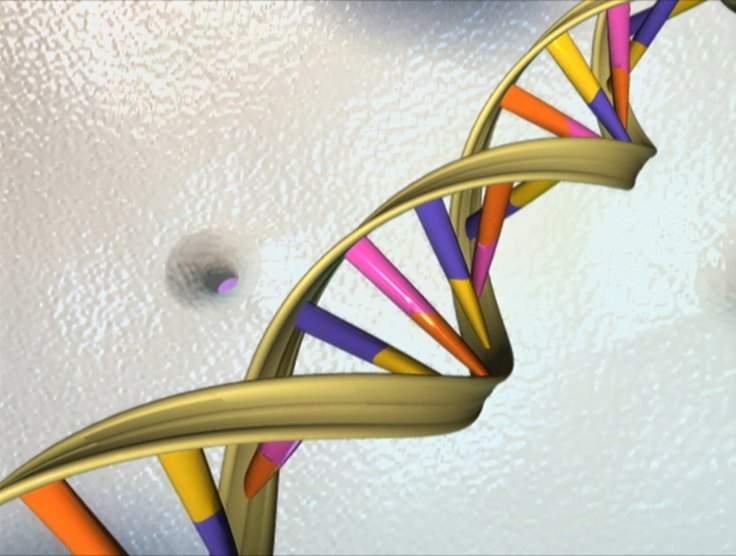Genome research 2014: From the ageless gene to the gay one, from a cure for … – International Business Times UK

The double helix molecule that works on how an organism develops, lives and reproduces continued to unveil many unknowns in its loops, folds and constituent genes.
A Radboud University researcher produced a single-handed amino acid-like molecule in a process similar to what most probably took place in the primordial soup on the planet.
Most attempts to make the molecules in the lab end up with two versions. But life on earth has a preference for left-handed variety of amino acids and right-handed sugars.
A cure for AIDS?
In what promises to deliver new effective therapies for Aids, researchers identified the region of the DNA to which the HIV virus binds itself.
This is what determines how quickly the disease progresses, said scientists at KU Leuven’s Laboratory for Molecular Virology and Gene Therapy and University of KwaZulu-Natal, Durban. Treatment can retarget the integration site to a safer part of the host DNA.
The fast mutating HIV has eluded a cure despite many claims in the recent past. The year saw a claim of a cure for HIV in the case of two men infected years ago but never developed Aids and have undetectable levels of HIV.
The virus was inactivated because its genetic code had been altered, said the researchers linking this to increased activity of a common enzyme Apobec.
However, experts questioned the accuracy and quality of the research.
Understanding Ebola
In a major step that could help develop anti-viral drugs against Ebola and related viruses like rabies and measles, University of Utah researchers discovered the exotic mechanism explaining the replication of these viruses.
The finding of how the virus replicates is “as fundamental as understanding the workings of HIV protease”, which is the enzyme essential for replication of the AIDS virus.
A disease that was on the brink of eradication returned to spread fear when outbreaks of polio in the Republic of Congo were linked to two genetic mutations in the polio virus. The study was done by IRD (Institut de recherche pour le développement).
The ageless gene
Scientists at UCLA identified a gene that they said can help slow the ageing process throughout the entire body when activated remotely in one of the key organs.
This could in one stroke treat many ageing-related diseases like Alzheimer, Parkinson, stroke, cardiovascular problems among others.
By increasing the amount of the gene AMPK in intestines of fruit flies, they were able to increase the lifespan by 30%. More important, the ageing process applied to all key organs.
Scientists have detected the molecular coordinator which averts potential accidents in the cells leading to ageing and cancer. The molecular ‘superman’ who swoops in and removes replicating and transcripting machinery from colliding among the strands of the DNA is a protein known as Dicer.
Dicer was known for its role in silencing genes, but the new discovery by Cold Spring Harbor Laboratory (CSHL) scientists shows that the protein has bigger responsibilities.
The ‘gay’ one!
As nations criminalised and decriminalised homosexuality, the existence of a potential gay gene in the male genome may just convince the jury.
A study by Northwestern University looked at 400 sets of twins to determine if some men are genetically inclined to be gay, and found that genetics accounted for around 30% to 40% of a man’s sexuality, while the rest was based on social and environmental factors.
The chunk of junk
Less than 10% of human DNA is “functional” while the chunk of the rest is junk, or just leftover evolutionary material, said researchers from Oxford University.
In 2012, the Encyclopedia of DNA Elements project had stated that 80% of our genome has some biochemical function.
Britain’s first cloned dog was made by a South Korean biotech firm.
Researchers assembled the first high-resolution, 3D maps of entire folded genomes which showed that a “genomic origami” or folding allows the same genome to produce different types of cells.
The five-year project undertaken by researchers at Harvard University, Baylor College of Medicine, Rice University and the Broad Institute of Harvard and MIT revealed that loops and other genome folding patterns are an essential part of genetic regulation.
The oldest living human tribe
One of the most ancient lineages of the modern human was traced to a Southern African tribe by sequencing the genome of five living individuals of the Khoisan hunter-gatherer tribe.
The Khoisan tribe, made popular by The Gods Must Be Crazy movie series has been the biggest group of living humans for most of the last 150,000 years, said scientists from Nanyang Technological University and Penn State University.
The group was found to be genetically distinct not only from Europeans and Asians, but also from all other Africans.
Blueprint of Wheat, African rice
An international team of researchers sequenced the complete genome of African rice, enabling the development of new rice varieties that can similarly cope with increasing environmental stresses.
Led by the Genomics Institute at the University of Arizona, the study saw the team analyse 33,000 genes that make the genome.
While scientists from Germany, the United States, the Czech Republic, and Canada assembled a draft of a genetic blueprint of bread wheat, also known as common wheat containing almost 100,000 genes.
A significant advancement for wheat genetics and the breeding community, the genetic blueprint allows plant science researchers and breeders to locate specific genes on individual chromosomes throughout the genome
Man is no mouse
What holds true for the mouse does not always hold true for humans, said a study done by the University of California, SanDiego School of Medicine and Ludwig Cancer which showed that a substantial number of mouse genes are regulated in ways different from similar genes in humans.
While mice models have served well in understanding genetic mechanisms in dealing with diseases, the fact that the details differ a lot calls for understanding these differences before using mouse models in experiments.



